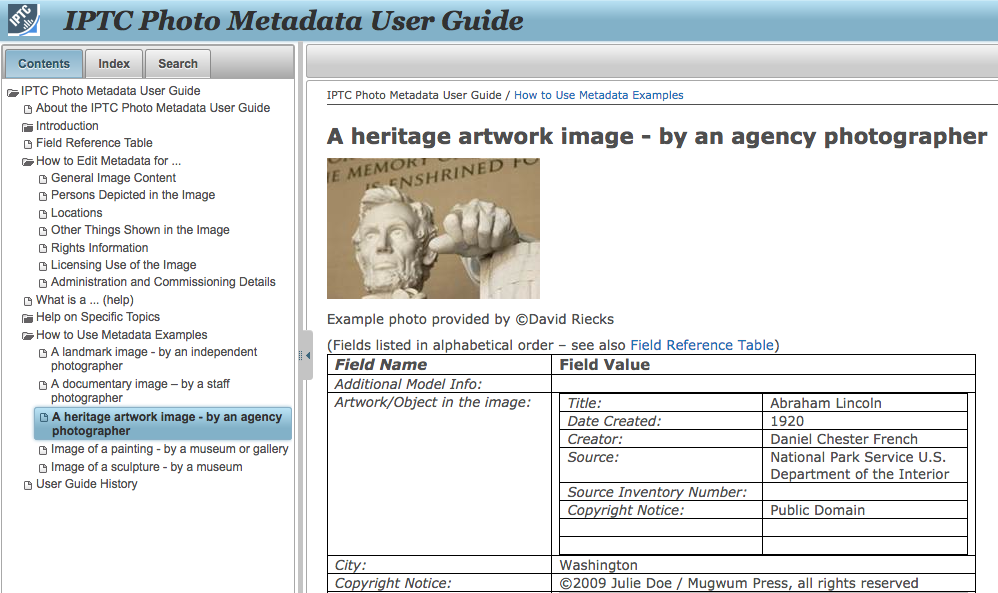Categories
Archives
I chair the Board of Directors of IPTC, a consortium of news agencies, publishers and system vendors, which develops and maintains technical standards for news, including NewsML-G2, rNews and News-in-JSON. I work with the Board to broaden adoption of IPTC standards, to maximize information sharing between members and to organize successful face-to-face meetings.
We hold face-to-face meetings in several locations throughout the year, although, most of the detailed work of the IPTC is now conducted via teleconferences and email discussions. Our Annual General Meeting for 2016 was held in Berlin in October. As well as being the time for formal votes and elections, the AGM is a chance for the IPTC to look back over the last year and to look ahead about what is in store. What follows is my prepared Chairman’s Report at the AGM.
Good morning from #IPTC Chairman @smyles, at the #IPTC Autumn Meeting 2016, #dpa in Berlin! pic.twitter.com/8u1KvBrfEu— IPTC (@IPTC) October 24, 2016
The Only Constant
It is clear that the news industry is experiencing a great degree of change. The business side of news continues to be under pressure. And, in no small part, this is because the technology involved in the creation and distribution of news continues to rapidly evolve.
However, in many ways, this is a golden age of journalism. The demand for news and information has never been higher. The immediate and widespread distribution of news has never been easier.
The IPTC has been around for 51 years. I’ve been a delegate to the IPTC since 2000 and Chairman of the Board since June 2014. I’d like to give my perspective on the changes going on within the news industry and how IPTC has and will respond.
We’re On a Mission
IPTC is rooted in – and foundational to – the news industry. Our open source standards for news technology enable the operations of hundreds of news and media organizations, large and small. IPTC standards are instrumental in the software used to create, edit, archive and distribute news and information around the world.
We are starting to evolve the scope of our work beyond standards – such as via the EXTRA project to build an open source rules-based classification engine. Much of what we do is relevant to not only news agencies and publishers, but also to photographers, videographers, academics and archivists. By bringing together these diverse groups, we can not only create powerful, efficient standards and technologies, but also learn from each other about what works and what does not.
Ch-ch-changes
What’s Going On?
- continuing to improve documentation – to make it easier to get going with a standard and simpler to grasp the nuances when you want to expand your implementation
- making our standards more coherent and consistent – as many organizations need to use a combination
Great discussion about #IPTC alliance, collaboration with International Image Interoperability Framework @IIIFramework re: #Photo #Metadata pic.twitter.com/EFWdOf7aC6— IPTC (@IPTC) October 24, 2016
PM session: standards makers PB Core, Media Institute; product vendors inVid, Extensis, Canto, Dextro, Mainstream Data on metadata workflows pic.twitter.com/9EJJQmjDwp— IPTC (@IPTC) October 25, 2016
Do Better
IPTC is a membership-driven organization. Membership fees represent the vast majority of the revenue for our organization. As the news industry as a whole continues to feel pressure – including downsizing, mergers and, unfortunately some members going out of business – the IPTC is experiencing downward pressure on its own revenue. So, we are working on ways to reach new members, whilst at the same time ensuring that existing members continue to derive value. We’re also open to exploring new ways of generating revenue which fit with our mission – let us know your ideas!
What new areas should the IPTC focus on? Many journalists are experimenting with an array of technologies – Augmented Reality, Virtual Reality, 360 degree photos, drones and bots, to name but a few. And let’s not forget about the “Cambrian Explosion” of technologies related to news and metadata on the Web, including AMP, AppleNews, Instant Articles, rNews, Schema.org and OpenGraph. How can IPTC help – negotiating standards? Developing best practices? Navigating the ethics of these technologies?
Happy
If you’re not happy, then please tell me!
I Want to Thank You
Finally, I’d like to extend a special thanks to Michael Steidl, Managing Director of the IPTC, who is personally involved in almost every aspect of what we do.
2017
Contact Stuart Myles
Twitter: @Smyles @IPTC
The IPTC has released a comprehensive set of sports controlled vocabularies as a supplement to the SportsML 3.0 sports-data interchange format, which was released in July 2016. These controlled vocabularies (CVs) are in the format of NewsML-G2 NewsML-G2 Knowledge Items plus RDF variants and are available on IPTC’s CV server at http://cv.iptc.org/newscodes.

There are 113 CVs representing such core sports concerns such as event and player status, as well as specialized lists for 11 sports (basketball, soccer, rugby, American football, etc.) for statistics, player positions, scoring types, etc.
“The SportsML 3.0 standard’s semantic tech capabilities are improved greatly by the new controlled vocabularies,” said Trond Husø, system developer for Norwegian news agency NTB, one of the early adopters of SportsML 3.0. “Data can be easily imported, structured, and stored.”
“When building a sports app you spend a lot of prep time defining your terms and building a schema,” said Paul Kelly, news technology consultant and lead for IPTC’s Sports Content Working Group. “By using SportsML 3.0, there is no need to reinvent the wheel.”
“You consider things such as ‘What sort of results and stats do we need?’ and ‘How will our system handle interrupted matches?’ IPTC’s vocabularies can get you on your way because they properly define in a standard format almost all the terminology you would use in a sports application: Everything from “goals-scored” to a full enumeration of status codes for sports events,” Kelly said.
For the Summer 2016 Olympics, NTB acquired the rights to distribute the results and data from the International Olympics Committee’s Olympic Data Feed (ODF). NTB then transformed ODF to SportsML 3.0, and then to NITF3.2. “Using SportsML to structure the ODF’s data is a broad and comprehensive solution to approaching all sports and competitions worldwide,” said Husø, who is also a member of IPTC’s Sports Content Working Group. “SportsML is now a truly flexible and universal format that can incorporate multiple vendor codes and still provide a defense against vendor lock-in.”
“Terms defined in another format such as ODF can easily live beside SportsML terms – as well as any other proprietary format – so that an organisation can build a repository of knowledge of all the different sports-data formats,” Kelly said.
Another advantage to the new SportsML 3.0 standard is that if new concepts are added to a sports vocabulary or modified in it, the data model and the XML Schema don’t change; they stay stable. It also supports all languages for the concept labels.
“A great feature is that we can translate the definitions to Norwegian – without changing or breaking the vocabulary,” said Husø. “If we were to distribute internationally, our domestic receivers could look up the definitions in Norwegian, while the international ones could use the English term.”
IPTC’s SportsML 3.0 standard underwent a major upgrade from version 2.2, after 12 years of evolution since its first version. The new standard incorporates contribution from sports experts in 12 countries. Its flexible core covers all major sports and events in most news reporting.
Other early adopters of SportsML 3.0 include Univision and the British Press Association in its new multi-sport API. Its major features include:
- compliance with IPTC’s NewsML-G2 standard
- a flexible core that covers all major sports and events in most news reporting
- plugins for detailed stats in 10+ sports
- a more flexible tournament model
- schedules, scores, standing, statistics, etc.
- choices between specific and generic terms
- controlled vocabularies, semantic tech capabilities
- schema redesign
- many samples and tool support.
Tool support for SportsML 3.0 includes 45 samples from 11 different sports and events, including both classic and SportsML-G2 examples, and both generic and specific examples.
The vocabularies will be maintained by IPTC for future expansion; new sports and terms can be added.
For more information on SportsML 3.0:
SportsML 3.0 Standard, including Zip package
SportsML 3.0 Specification Documents
NewsML-G2 Standard
Contact: Trond Husø @trondhuso, Trond.Huso@ntb.no
IPTC has published an updated Photo Metadata User Guide, for photographers, photo editors and professionals responsible for in-house metadata workflows, including digital asset management (DAM) systems.
Based on IPTC’s widely used Photo Metadata Standard, the new User Guide contains practical information regarding photo metadata – from photographers familiarizing themselves with basics, to managers in related businesses who have a deeper understanding of implementation of standards and metadata.
A key use of metadata is to describe the content of an image, location and rights information; the guide groups metadata fields according to information types. “The User Guide will help when deciding where metadata should be put about a certain topic, and what data should or should not be filled into a specific field,” said Michael Steidl, managing director of IPTC, and lead of IPTC’s Photo Metadata Working Group.
IPTC sets the industry standard for administrative, descriptive, and copyright information about images. The IPTC Photo Metadata Standard, supported by many software applications, is the most widely used standard because of its universal acceptance among photographers, distributors, news organisations, archivists, and developers.
The Photo Metadata User Guide walks users through the major groups of metadata, and for each IPTC field contained within each, it provides short guidelines on the use and semantics.
The first section of the guide outlines practical use for a basic understanding of applying photo metadata, and may be most helpful to photographers becoming familiar with adding it to their photos for the first time. Photo metadata is key to protecting photographers’ images, including copyright and licensing information online.
The User Guide addresses typical questions such as:
- What is a minimum set of fields to be used?
- How is metadata preserved?
Five examples of metadata for independent, staff, and agency photographers plus images of artwork are given.
Photo metadata is also essential for managing digital assets. Detailed and accurate descriptions about images ensure they can be easily and efficiently retrieved via search, by users or machine-readable code. This results in smoother workflow within organisations, more precise tracking of images, and potential for licensing opportunities.
For professionals responsible for in-house photo metadata workflows and DAM systems, all IPTC metadata fields in the User Guide have been grouped by topic for easy reference: general description, persons, locations, things shown, rights and licensing information, and administrative data.
The User Guide does not focus on the user interface of a specific software, and will be updated regularly to include more details.
For questions about the Photo Metadata User Guide or about becoming involved in IPTC’s work: Contact us.
Twitter: @IPTC
LinkedIn: IPTC
